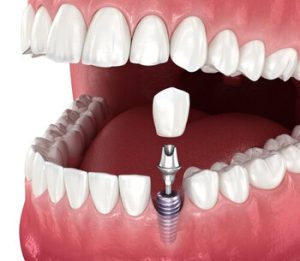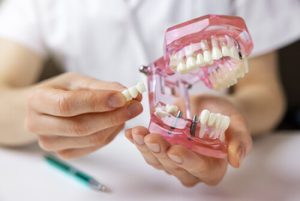Losing a tooth can feel disruptive, not just for your smile but for everyday tasks like speaking and chewing. Many people exploring dental implants ask: can you get a temporary tooth while waiting for an implant? The answer can shape how confident and comfortable you feel during your healing journey.
This guide addresses that question in full, walking you through what to expect, what options exist, and how to make decisions that suit your needs and lifestyle.
How Long Will You Be Without a Tooth?
If you’re worried about how long the gap might remain, you’re not alone. Understanding the timing around implant placement helps you prepare emotionally and practically.
The Typical Waiting Period Between Steps
The dental implant procedure is rarely completed in one visit. After placing the implant post into your jawbone, your body needs time to support healing. This healing period usually takes several months before your permanent crown is placed.
Why a Gap May Not Be Left Open
Most dentists will recommend a temporary tooth replacement to fill the space left by a missing tooth. This prevents nearby teeth from shifting and helps maintain your bite alignment and appearance.
Immediate Implants Are Not Always Possible
While some people are eligible for immediate placement, others may need additional time for the bone or gum tissue to recover, especially if an extraction or bone graft was recently done.
What Are Your Temporary Options While You Heal?
Knowing your short-term choices can help you feel more in control and less self-conscious while you wait. There are several types of temporary teeth depending on the number and location of missing teeth.
 Temporary Crowns and Temporary Bridges
Temporary Crowns and Temporary Bridges
A temporary crown may be placed over the implant post if it is stable enough. Temporary crowns help protect the area and restore the appearance of real teeth during healing. In some cases, temporary bridges are used when multiple teeth are missing in one area.
Removable Partial Dentures as a Temporary Solution
Often called flippers, these are lightweight acrylic appliances that clip onto surrounding natural teeth. Though not ideal for chewing, they are discreet and can offer a natural-looking smile during the interim.
Temporary Solutions for Front Versus Back Teeth
Gaps in visible areas, like the front, are usually prioritised for immediate cosmetic replacement. Back teeth may not require temporary teeth, especially if eating habits can be adjusted and aesthetics are not affected.
How Will a Temporary Tooth Affect Daily Life?
Temporary teeth are designed to improve appearance and function, but it is important to know their limitations. They are not permanent and must be treated with extra care.
Adjusting to the Feel of a Temporary Tooth
Initially, a temporary tooth may feel unfamiliar. With a well-designed fit, most people adjust within days. Your dentist will ensure it aligns properly and fits comfortably without putting pressure on the implant site.
Foods to Avoid During the Healing Phase
It is important to avoid hard or sticky foods that could dislodge or damage your temporary tooth. Sticky foods and hard objects can create pressure that interferes with healing.
What Role Do Temporary Teeth Play in the Long-Term Outcome?
Temporary teeth are more than just a cosmetic fix. They play a crucial part in ensuring your implant heals correctly and your final outcome is predictable.
Protecting Gum Tissue and Bone
By occupying the gap left by the missing tooth, temporary teeth prevent gum tissue from collapsing. This maintains the proper space and shape needed for a natural-looking permanent crown.
Supporting Proper Bite and Jaw Function
Temporary replacements keep your bite aligned and reduce the risk of bite-related issues that can arise from gaps. This reduces the risk of extra stress on surrounding natural teeth.
Preventing Movement of Adjacent Teeth
If left untreated, missing teeth can lead to the shifting of nearby teeth. A temporary solution helps hold everything in place until your permanent implant is ready.
Is It Safe to Use Temporary Teeth After Implant Placement?
Many patients ask whether using temporary options during healing will interfere with the outcome. When done correctly, temporary teeth support healing, not hinder it.
Proper Timing Matters Most
Temporary crowns may only be placed once the implant post has stabilised. Premature pressure can affect the success of the implant, so your dentist will assess readiness carefully.
 Close Monitoring Ensures Safety
Close Monitoring Ensures Safety
During the dental implant process, regular dental check ups are vital. These visits allow your dentist to check gum health, ensure your temporary crown remains secure, and make sure healing stays on track.
Designed to Be Gentle on the Implant
Your temporary solution will be designed to avoid putting direct stress on the implant. The goal is always to protect the healing site while preserving appearance.
Are Same-Day Teeth an Option for You?
When Immediate Implants Work
If you have strong jawbone density and no infection, same-day implants with a temporary crown might be possible. This is often done in front teeth to maintain appearance.
When Delayed Placement Is Safer
Sometimes, it is safer to wait. If you had a recent extraction or bone graft, or if infection is present, your dentist will likely delay implant placement until your mouth is ready.
Individual Assessment by an Experienced Team
Your dental team will evaluate X-rays, discuss your goals, and guide you through the dental treatment plan tailored to your needs. The focus is always on safety and long-term success.
What Costs and Coverage Should You Expect?
Understanding costs helps you make informed decisions. Temporary teeth can be included in the overall plan or billed separately, depending on your dentist and insurance.
Costs Vary Based on Material and Type
Removable options like flippers are generally less expensive, while custom temporary crowns tend to cost more. Discuss all options with your dentist in advance.
Insurance Coverage May Be Partial
Not all health funds cover temporary crowns or bridges. It is worth reviewing your policy before the dental procedure begins.
Weighing Value Over Time
Though temporary, these solutions offer significant value by protecting your oral health, supporting daily function, and helping you feel confident during your waiting period.
Explore Temporary Options While You Wait for Implants
 You do not need to go without teeth while waiting for an implant. Temporary solutions are available to help protect the implant site, support your appearance, and maintain your daily routine without discomfort or embarrassment. By discussing with our dentist how the gap affects your lifestyle, you can explore implant treatment options in Chatswood, NSW, that fit comfortably and resemble natural teeth. Each solution plays a role in preserving gum health, encouraging good oral hygiene, and helping you smile with confidence until your permanent implant is ready. At our clinic, we guide you through every stage of treatment with care tailored to your needs. Call us today on (02) 9054 5281 to schedule your consultation and take the next step toward your confident smile.
You do not need to go without teeth while waiting for an implant. Temporary solutions are available to help protect the implant site, support your appearance, and maintain your daily routine without discomfort or embarrassment. By discussing with our dentist how the gap affects your lifestyle, you can explore implant treatment options in Chatswood, NSW, that fit comfortably and resemble natural teeth. Each solution plays a role in preserving gum health, encouraging good oral hygiene, and helping you smile with confidence until your permanent implant is ready. At our clinic, we guide you through every stage of treatment with care tailored to your needs. Call us today on (02) 9054 5281 to schedule your consultation and take the next step toward your confident smile.
Note: Any surgical or invasive procedure carries risks. Before proceeding, you should seek a second opinion from an appropriately qualified health practitioner.
References:
https://my.clevelandclinic.org/health/treatments/10903-dental-implants
https://www.colgate.com/en-in/oral-health/bridges-and-crowns/what-are-dental-crowns-and-tooth-bridges


 Temporary Crowns and Temporary Bridges
Temporary Crowns and Temporary Bridges Close Monitoring Ensures Safety
Close Monitoring Ensures Safety